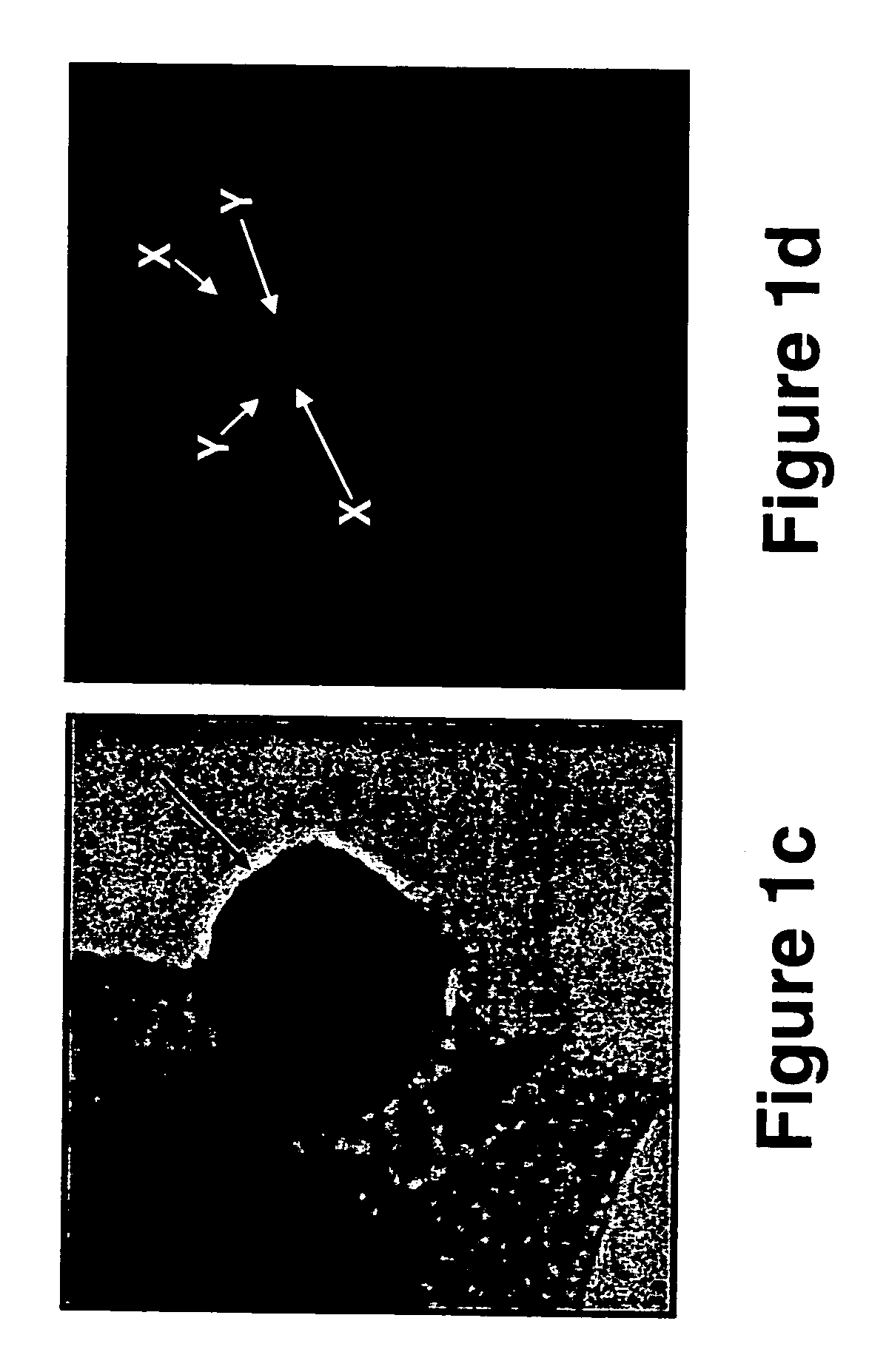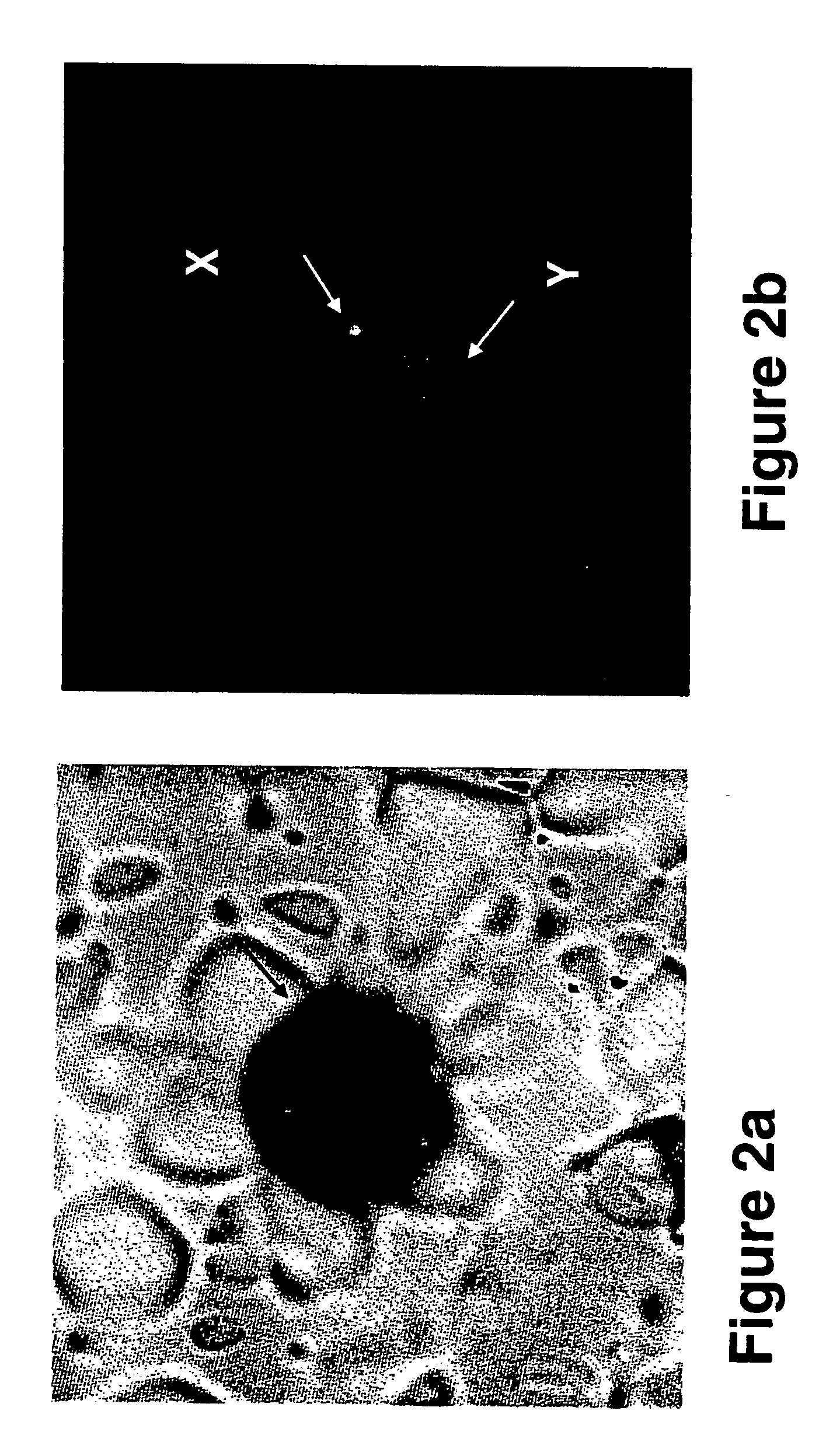Non-invasive prenatal genetic diagnosis using transcervical cells
a transcervical cell and prenatal technology, applied in the direction of material testing goods, biochemistry equipment and processes, instruments, etc., can solve the problems of increased risk of fetal abnormality, 4% procedure-related risk of miscarriage, defective limb development,
- Summary
- Abstract
- Description
- Claims
- Application Information
AI Technical Summary
Benefits of technology
Problems solved by technology
Method used
Image
Examples
example 1
Determination of Fetal Fish Pattern from ExtraVillous Trophoplast Cells Obtained from Transcervical Specimens
[0277] Transcervical cells obtained from pregnant women between 6th and 15th Week of gestation were analyzed using immunohistochemical staining followed by FISH analysis, as follows.
[0278] Materials and Experimental Methods
[0279] Study subjects—Pregnant women between 6th and 15th week of gestation, which were either scheduled to undergo a pregnancy termination or were invited for a routine check-up of an ongoing pregnancy, were enrolled in the study after giving their informed consent.
[0280] Sampling of transcervical cells—A Pap smear cytobrush (MedScand-AB, Malmö, Sweden) was inserted through the external os to a maximum depth of 2 cm (the brush's length), and removed while rotating it a full turn (i.e., 360°). In order to remove the transcervical cells caught on the brush, the brush was shaken into a test tube containing 2-3 ml of the RPMI-1640 medium (Beth Haemek, Isra...
example 2
Fetal Fish Pattern Can be Determined on Extravillous Trophoblast Cells Using the HLA-G and the CHL1 Antibodies
[0310] To increase the detection rate of fetal trophoblasts in human transcervical cells, the present inventors have employed the CHL1 antibody, a new extravillous trophoblast-recognizing antibody, raised against the chorion leave from a fetal membrane (Higuchi T, et al., 2003, Mol. Hum. Reprod. 9: 359-366; Fujiwara H, et al., 1993, J. Clin. Endocrinol. Metab. 76: 956-961; Higuchi T, et al., 1999, Mol. Hum. Reprod. 5: 920-926), as follows.
[0311] Materials and Experimental Methods
[0312] CHL1 antibody—The CHL1 antibody which recognizes the melanoma cell adhesion molecule [MCAM, Mel-CAM, S-endo 1 or MUC18 / CD 146, Higuchi, 2003 (Supra)] was obtained from Alexis Biochemicals [Cat. No. 805-031-T100, monoclonal antibody to human CD146 (F4-35H7, S-endo1; anti-MCAM)] and was diluted 1:200 prior to use on transcervical cell samples.
[0313] Immunohistochemistry and FISH analyses wer...
example 3
Identification of Sycitiotrophblasts in Transcervical Specimens Using an NDOG-1 Antibody
[0319] In attempts to improve the sensitivity of trophoblast identification in transcervical specimens, and due to the fact that syncytiotrophoblasts are not stained using common trophoblast antibodies (e.g., HLA-G) the present inventors employed the mouse anti human trophoblast protein NDOG-1 antibody on transcervical specimens obtained from pregnant women.
[0320] Prior to use, the mouse anti human trophoblast protein NDOG-1 antibody (MCA277, Serotec immunological excellence, UK) was diluted 1:50 in the antibody diluent and was incubated on the transcervical specimens according to the immunohistochemistry protocol described in “Materials and Experimental Methods” of Example 1, hereinabove.
[0321] As is shown in FIGS. 6a-b, the NDOG-1 antibody specifically labeled the nuclei of the syncytiotrophoblasts present in transcervical specimens obtained from a pregnant woman at the 7th week of gestation...
PUM
| Property | Measurement | Unit |
|---|---|---|
| depth | aaaaa | aaaaa |
| pH | aaaaa | aaaaa |
| volume | aaaaa | aaaaa |
Abstract
Description
Claims
Application Information
 Login to View More
Login to View More - R&D
- Intellectual Property
- Life Sciences
- Materials
- Tech Scout
- Unparalleled Data Quality
- Higher Quality Content
- 60% Fewer Hallucinations
Browse by: Latest US Patents, China's latest patents, Technical Efficacy Thesaurus, Application Domain, Technology Topic, Popular Technical Reports.
© 2025 PatSnap. All rights reserved.Legal|Privacy policy|Modern Slavery Act Transparency Statement|Sitemap|About US| Contact US: help@patsnap.com



